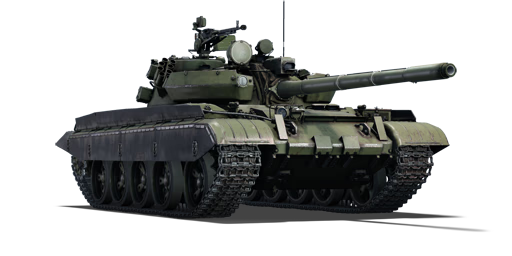The T-55AM was a project initiated by the Soviet Army in the 1970s to modernize the T-55A tank and keep it relevant on the battlefield. The T-55, which had been in service since the 1950s, was no longer capable of keeping up with changing technologies and modern tanks. The T-55AM project aimed to extend the service life of the T-55 and improve its combat capabilities. The modernization included a number of upgrades, such as the addition of passive applique armor, the Volna fire control upgrade, the optional fitting of the new Bastion guided projectile, automotive upgrades, and many small improvements. The upgraded T-55s and T-55As were given the designations T-55M and T-55AM, respectively. The suffix "-1" in the T-55AM-1's designation indicates that it was equipped with the newer and more powerful V-46-5M engine, which was based on the engine used in the T-72.
The T-55AM-1 was introduced as a premium pack in Update 1.81 "The Valkyries". With a combination of strong armor, firepower, mobility, and various styles of gameplay, it is one of the best all-around tanks at its battle rating. It is a very satisfactory upgrade over the T-55A model, providing improved performance in all aspects of combat.










 2 x (140 / 200 / 245) %
2 x (140 / 200 / 245) % 
 2 x 214 %
2 x 214 % 
